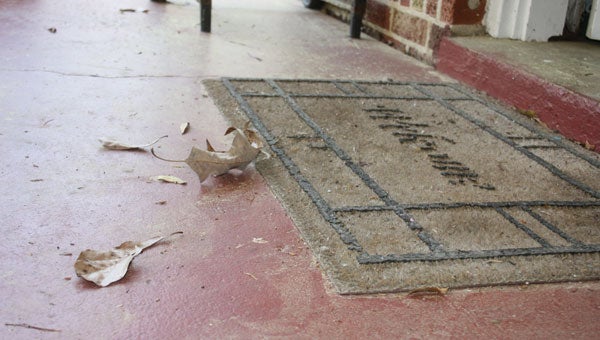ACHOO! Pollen counts high this week
Published 12:00 am Thursday, March 27, 2014
Spring is in the air, and with spring comes the dreaded pollen.
Pollen can be seen on folks’ cars and on sidewalks, but can also be the reason behind sneezing, stuffy noses, itchy, watery eyes and coughing as it stirs up allergies.
According to the pollen tracking website Pollen.com, allergy symptoms affect more than 67 million Americans.
The website defines allergies as “a heightened sensitivity to a foreign substance – called an allergen – that causes the body’s immune system to overreact when defending itself.”
Pollen.com focuses on tracking pollen levels around the country and states that the levels for Covington County have consistently been high. Pollen count is a number that tracks the number of grains of pollen per cubic meter of air. It is ranked on a scale from low (0) to high (12). It’s tracked separately for the trees, grass species and weeds that produce it. With the number of people pollen allergies affect, it has become a staple in weather forecasts.
This week, pollen.com forecasts the pollen count will be 10.6 in Andalusia and Opp.
Couple the pollen with record lows and sudden warm spells; it’s an allergy sufferer’s nightmare.
And with a cold and snowy winter, experts say allergies will be worse than normal.
Experts say that chronic coughing, watery eyes and running noses are among the symptoms of allergy sufferers.
According to Dr. Bruce Irwin, founder of American Family Care and AFC/Doctors Express, “when it got warm and the pollen was released, it was too late for allergy sufferers to protect themselves, even when it got cold again. The erratic weather caught many allergy sufferers off-guard and we’re treating a lot of them.”
Learning the ABCDs of Allergies could prove helpful to locals.
• A – Allergized America. Some 40 million Americans have indoor or outdoor allergies. The most common triggers are tree, grass and weed pollen; mold spores, dust mite and cockroach allergens; and some cat, dogs and rodent dander.
• B – Beware of symptoms. Is it an allergy or a cold?
Allergy symptoms include red, itchy, watery eye – common colds don’t cause eye irritation. Sneezing – can be cold-related but is usually triggered by an allergy. Dark circles under eyes are also signs of allergies.
• C – children suffer long term. Approximately 40 percent of children in the U.S. suffer from allergies.
• D – don’t let your guard down. If you’ve been outside, take a shower before you go to bed and change into fresh clothes so you don’t bring pollen onto your sheets that may have clung to your skin, hair or clothes.
When it comes to treating allergy symptoms, a nationwide survey by the American Optometric Association found that almost half of allergy suffers use antihistamines or other medications to treat their symptoms, which can help with typical symptoms like runny noses and sneezing.
According to Dr. Bill Tillman of Tillman Family Eye Care, itchy, watery eyes are also a sign of allergies.
“While eye allergies can affect anyone, spring is especially hard on contact lens wearers,” he said. “Allergy season can make wearing them uncomfortable. Extended wear time and infrequent lens replacement are two of the main reasons contact lens wearers face more prevalent symptoms.”
Antihistamines such as Zyrtec, Allegra or Claritin are recommended, as are prescription eye drops.






